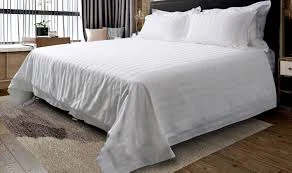Improving Bedding Quality for Enhanced Sleep Comfort and Health Benefits
Understanding Bedding Quality A Comprehensive Guide
In today's fast-paced world, quality sleep is paramount for overall well-being. One of the most significant factors that contribute to a good night’s sleep is bedding quality. Bedding not only impacts comfort but also plays a crucial role in health, hygiene, and sleep quality. In this article, we explore what constitutes high bedding quality and why it matters.
Bedding quality can be assessed through three primary components materials, construction, and maintenance. Each of these plays a crucial role in the overall experience of using bedding.
Materials Matter
The material of bedding items — sheets, pillowcases, comforters, and mattresses — significantly impacts both comfort and durability. Natural fibers, such as cotton, linen, and bamboo, are often preferred for their breathability, moisture-wicking properties, and softness. Cotton, especially Egyptian or Pima cotton, is celebrated for its luxurious feel and long-lasting nature. In contrast, synthetic fibers, like polyester, offer wrinkle resistance and affordability but may lack the breathability of natural fibers.
When selecting bedding, thread count also plays a role, especially for sheets. A higher thread count often indicates a denser weave and can translate to a softer feel, although it’s not the sole determinant of quality. The weave type — percale, sateen, or twill — can also affect the texture and durability of the fabric.
Construction and Design
bedding quality

The construction of bedding items is as essential as the materials used. For mattresses, factors such as support, firmness, and technology (like memory foam or hybrid designs) can greatly influence sleep quality. A well-constructed mattress promotes proper spinal alignment and reduces pressure points, which is vital for a restful sleep.
Similarly, duvet covers, pillow encasements, and mattress protectors should be designed with functionality and aesthetics in mind. Quality stitching, closures, and overall finish reflect the attention to detail that can enhance longevity and ease of use. When investing in bedding, consider not only the visual appeal but also how well it meets comfort and functionality standards.
Maintenance for Longevity
Maintaining bedding quality is essential for both hygiene and durability. Regular washing is necessary to keep sheets and pillowcases fresh and free from allergens such as dust mites and pet dander. Most bedding items should be washed weekly, while heavier items like comforters may only need washing every few months, depending on usage.
Proper care instructions should be followed based on the materials. For instance, natural fibers often require gentler washing cycles and lower heat during drying to prevent shrinkage. Investing in high-quality bedding can initially be more expensive, but proper maintenance can extend its lifespan, ultimately making it a cost-effective choice.
Conclusion
In conclusion, bedding quality profoundly affects sleep quality, comfort, and overall health. By understanding the importance of materials, construction, and maintenance, consumers can make informed choices that lead to better sleep experiences. Investing in high-quality bedding is not just about luxury; it is a commitment to personal well-being and health. A good night’s sleep should never be underestimated, as it lays the foundation for a productive and happy lifestyle. Therefore, take the time to choose bedding that meets high-quality standards — your mind and body will thank you.
-
Elevating Comfort and Quality with the Right Bed LinenNewsJul.07, 2025
-
Bedding Essentials: From Percale Sheets to White Quilts, Finding Your Perfect Sleep HavenNewsJul.07, 2025
-
Choosing the Right Bedding for a Comfortable and Stylish BedroomNewsJul.07, 2025
-
Understanding the Diverse World of Towel TypesNewsMay.29, 2025
-
The Ultimate Comfort: Discover the Benefits of Polycotton SheetsNewsMay.29, 2025
-
Experience Luxury with 1800 Brushed Microfiber SheetsNewsMay.29, 2025
-
Elevate Your Sleep with Luxurious Hotel Sheets for SaleNewsMay.29, 2025






